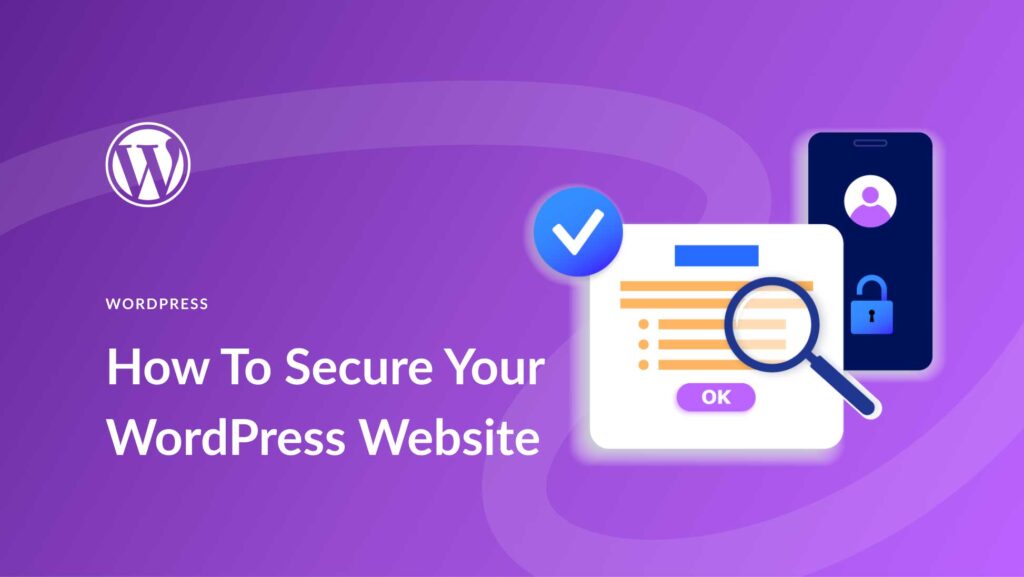Securing a WordPress website is crucial to protect it from hacking attempts, malware, and other security threats. Here are some best practices for securing your WordPress website:
- Use strong, unique passwords for your WordPress admin account and FTP/SFTP/SSH user. Avoid using common words or phrases, and make sure to use a combination of letters, numbers, and special characters.
- Keep your WordPress and all plugins and themes up to date. It is important to update your website to the latest version of WordPress as soon as a new version is released. This is because new versions often include security patches that fix known vulnerabilities. Additionally, make sure to update all of your plugins and themes as well, as they may also contain security vulnerabilities.
- Use a security plugin, such as Wordfence or iThemes Security, to add an extra layer of protection to your website. These plugins can help protect your website from known and unknown threats, such as malware, hacking attempts, and more.
- Use a web application firewall (WAF) to protect your website from known and unknown threats. A WAF can help protect your website from common attacks such as SQL injection, cross-site scripting (XSS), and more.
- Use two-factor authentication (2FA) to add an extra layer of security to your login process. Two-factor authentication requires users to provide two forms of identification before logging in, such as a password and a code sent to their phone or email. This makes it much harder for hackers to access your website.
- Keep a regular backup of your site. Backing up your website regularly ensures that you can restore it in case of a security breach or other issues.
- Limit login attempts to prevent brute-force attacks. Brute force attacks are when hackers try to guess a user’s password by trying multiple combinations. By limiting the number of login attempts, you can help prevent these attacks.
- Use HTTPS for secure communication. HTTPS encrypts all communication between the user and the server, making it much harder for hackers to intercept or steal information.
- Limit access to wp-admin and wp-login. These are two of the most common areas of a WordPress website that hackers will try to access. By limiting access to these areas, you can make it much harder for hackers to gain access to your website.
- Regularly scan your website for malware and vulnerabilities. This can help you identify and fix any issues with your website before they can be exploited by hackers.
In addition to these best practices, there are a few other steps you can take to further secure your website. For example, you can use a content delivery network (CDN) to help protect your website from DDoS attacks. You can also use a plugin like Login Lockdown to help protect your website from brute-force attacks.
In addition to using a security plugin, you can also use a malware scanner to check your website for malware and other security threats. Some popular malware scanners include Sucuri Security and Anti-Malware Security and Brute-Force Firewall.
Another important step to securing your website is to make sure your hosting provider is secure. Make sure to choose a hosting provider that offers regular backups, automatic updates, and a firewall.
It’s also important to be aware of the risks of using third-party plugins and themes. While these can add functionality to your website, they can also introduce security vulnerabilities. Be sure to only use reputable plugins and themes, and keep them updated.
Lastly, it is always a good idea to have a professional security audit done on your website. This can help identify any vulnerabilities

